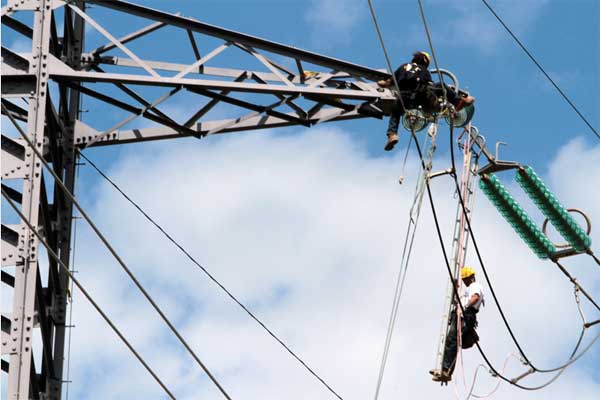HONOLULU, Dec. 23, 2016 /PRNewswire/ — The Power Supply Improvement Plan Update filed with the Hawai’i Public Utilities Commission describes the work that will form the foundation to meet or exceed the state’s renewable energy milestones, which are the most ambitious in the country.
The updated plan describes greater and faster expansion of the companies’ renewable energy portfolio than in the plan filed in April 2016 and emphasizes work that is in progress or planned over the next five years on each of the five islands the Hawaiian Electric Companies serve.
It also stresses the need to remain flexible so that decisions made today don’t crowd out future technological advances in power generation, distribution and storage.
The companies forecast that they will exceed the state’s renewable energy milestones in 2020 and can exceed the milestones in 2030 and 2040 by attaining a renewable portfolio standard (RPS) of:
48 percent by the end of 2020; the mandated goal is 30 percent
At least 72 percent by the end of 2030; the mandated goal is 40 percent
At least 100 percent by the end of 2040; the mandated goal is 70 percent. This would be five years ahead of the 2045 deadline to reach the goal of 100 percent renewable energy.
The plan estimates that the RPS after 2030 could exceed 100 percent when taking into account customers’ generation of electricity for their own use as well as the anticipated widespread use of battery storage.
In the near-term, using a proposed mix of solar, wind, battery storage and biofuels, the plan aims to achieve an RPS of 100 percent on Moloka’i by 2020.
By 2020, Hawai’i Island is forecast to reach an RPS of 80 percent, Maui 63 percent, Lānaʻi 59 percent and O’ahu 40 percent.
The plan includes the continued growth of private rooftop solar and describes the work to expand and upgrade grid infrastructure and to use the newest generations of inverters, control systems and energy storage to help reliably integrate an estimated total of 165,000 private systems by 2030, more than double today’s total of 79,000. Hawaiian Electric already has the highest percentage of customers using rooftop solar of any utility in the U.S. and customer-sited storage is seen as a key contributor to the growth of the renewable portfolio on every island.
In addition, the plan forecasts the addition of 360 megawatts of grid‑scale solar, 157 megawatts of grid‑scale wind and 115 megawatts from programs known as Demand Response, which can shift customer use of electricity to times when more renewable energy is available, potentially making room to add even more renewable resources.
“The energy transformation must include everyone” is one of seven principles that the Hawaiian Electric Companies developed to broadly help define the mission of the power supply improvement plan. The need to balance the pursuit of renewable energy with price stability and affordability for customers is described throughout the plan. Investments in grid infrastructure, as well as rising oil prices, are expected to increase the typical residential bill over the next several years, with gradually declining bills forecast to start in the mid-2020s.
A change from the document filed in April is that this update does not include the use of liquefied natural gas (LNG) to generate power in the near-term. While LNG remains a potential lower-cost bridge fuel to be evaluated, the companies’ priority is to continue replacing fossil fuel generation with renewables over the next five years as federal tax incentives for renewables begin to phase out.
An interisland cable is not in the near-term plan, which states that its costs and benefits should continue to be evaluated.
The plan also provides a solid foundation for the electrification of transportation, reducing the use of fossil fuels for ground transportation. For example, charging electric vehicles during the day when renewable energy is abundant could create an additional demand for renewables.
The Hawaiian Electric Companies are exploring additional actions and resources beyond those described in the plan. For example, working with land owners and developers, planners are exploring pumped storage hydropower, run-of-the-river hydropower, hydrogen and wave energy as potential additions. As part of this ongoing exploration, the companies recently issued a Request for Information to land owners who may be interested in teaming with a developer to host a renewable energy project.
“We have a solid plan that accelerates our progress to get to 100 percent renewable energy. We can do this,” said Alan Oshima, Hawaiian Electric president and CEO. “We want to work with parties from all segments of our community — government, business, community, and environmental groups – to refine the plans for Hawai’i’s energy future.”
The companies followed an open, collaborative process to develop these plans, participating in multiple stakeholder workshops and technical conferences to share information and ideas. Planners ran and analyzed multiple scenarios to balance the desires for reliability, affordability and sustainability.
Among the stakeholders who provided input into the plan are the state Consumer Advocate; Ulupono Initiative; Blue Planet Foundation; Hawai’i Gas; Paniolo Power on Hawai’i Island and the state Department of Business, Economic Development and Tourism.
Additional independent technical analysis was provided by the U.S. Department of Energy, National Renewable Energy Laboratory, the Hawaii Natural Energy Institute and the Electric Power Research Institute.













Comments